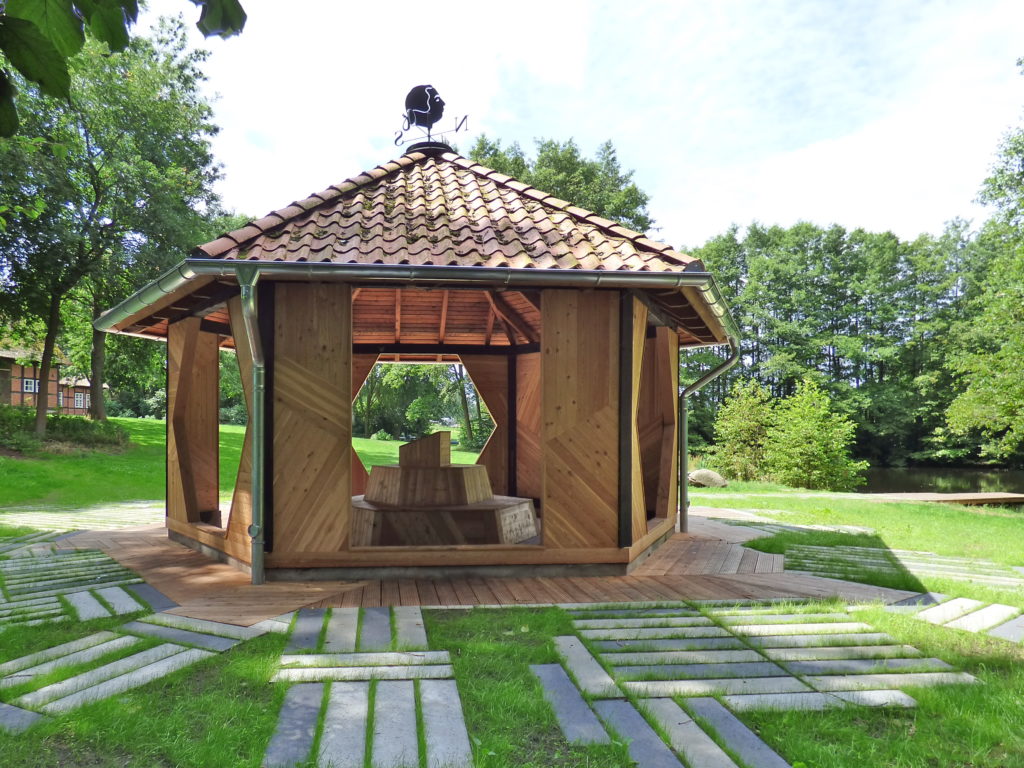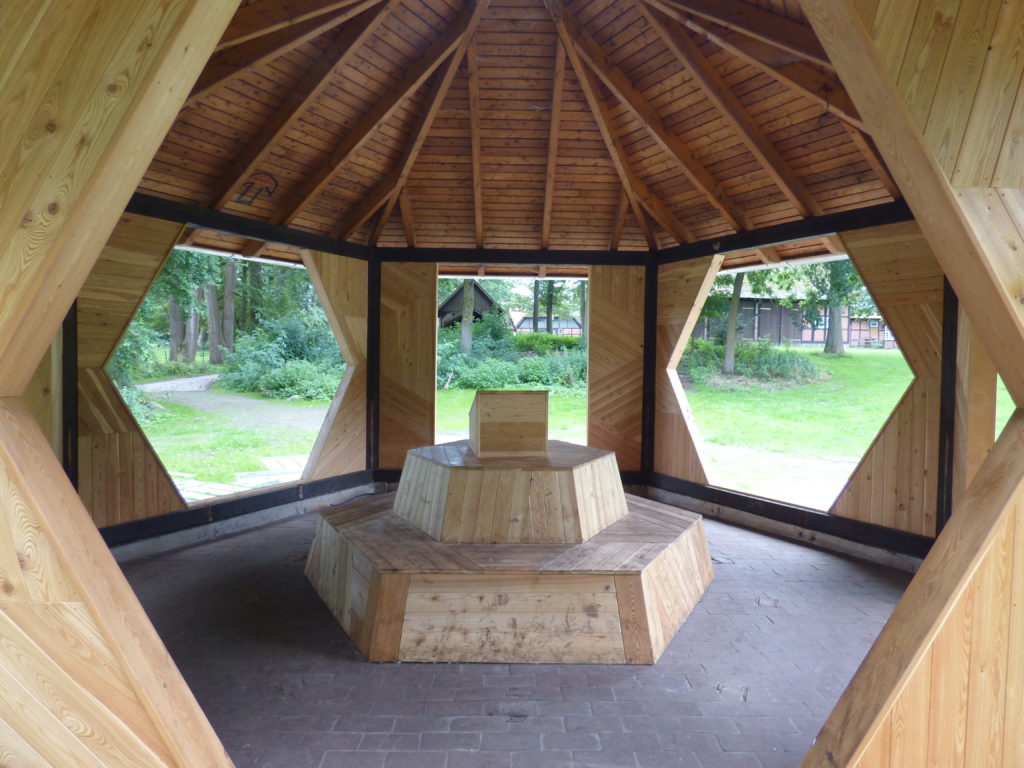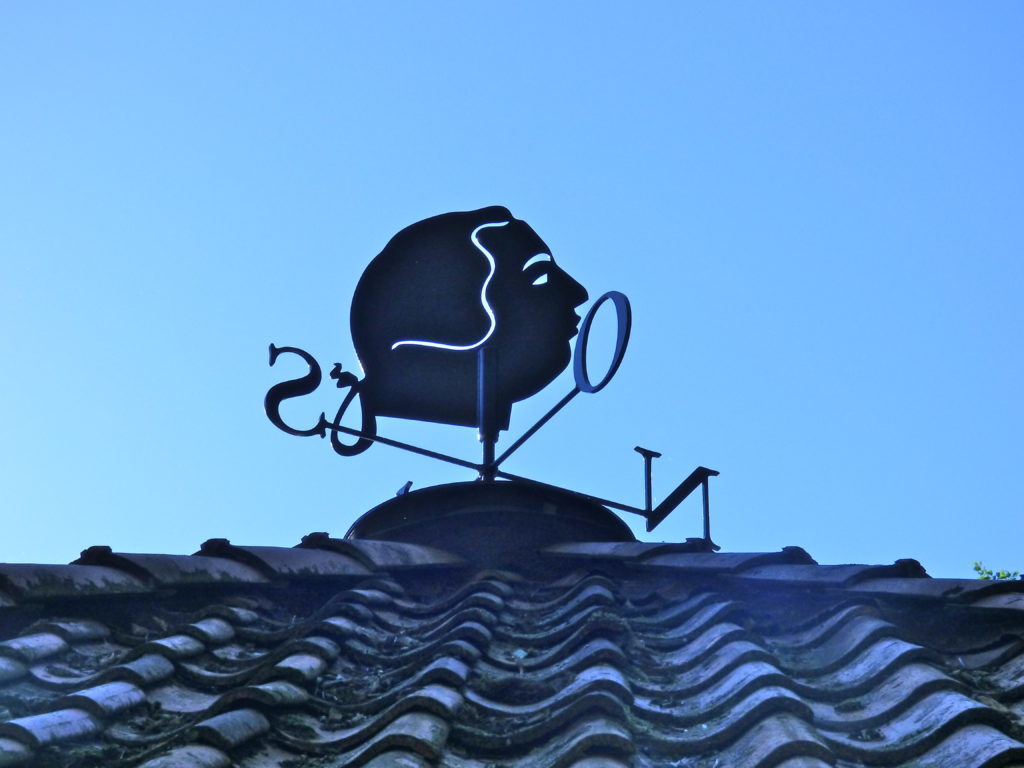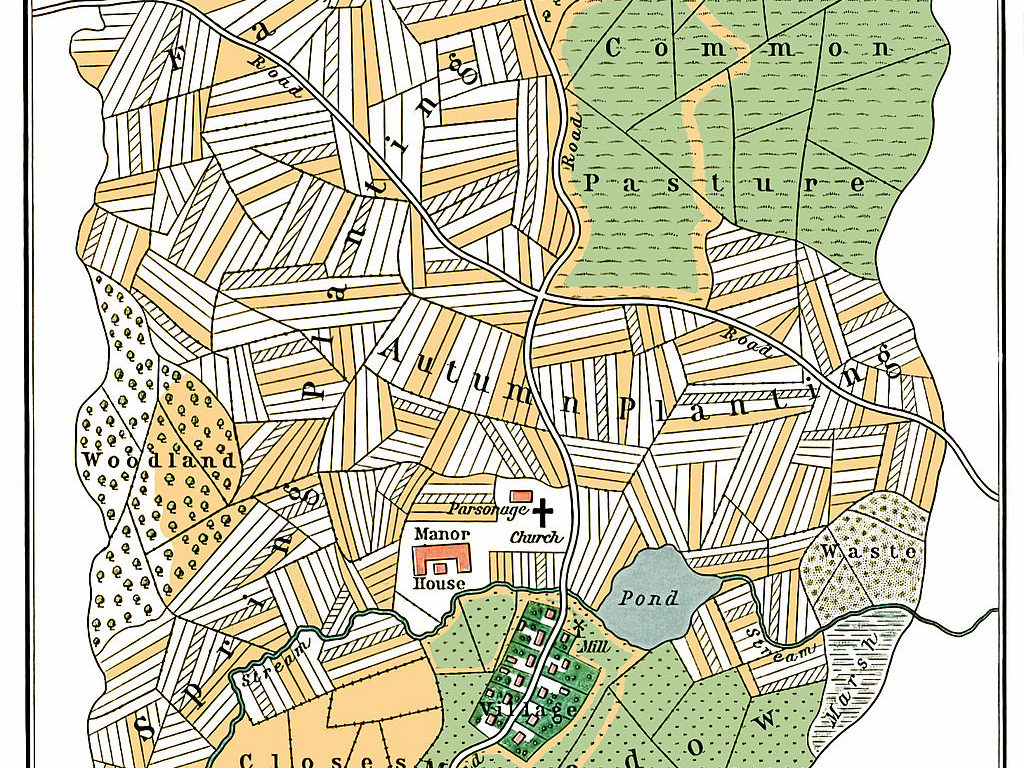“Folly”: Nils Norman’s pavilion is named after the capricious ornamental buildings that were a favorite feature of 18th-century English landscape parks. The British artist born in Kent in 1966, who realized projects internationally in the urban area, transformed a marvelous barbecue hut at Dorfteich in Neuenkirchen into a light, airy place to stay. Norman opened the half-closed walls, freeing the view of the surroundings. The mosaic-like paneling and the composition of the staircase-shaped round bench in the interior of the pavilion, the structuring of the paving and the path leading to the pond, together with the landing stage with a further bench at the water point to the small parcelling of the fields before the land reforms of the 18th and 19th centuries. century. The silhouette on the weather flag, Which crowns Norman’s “Folly”, represents the “peasant king” Georg III. Regent of England and Hanover. The land reforms launched under George’s rule in England were the model for a massive change in agricultural landscape in large parts of Europe.
Norman lives in London and Copenhagen, where he teaches at the Royal Danish Academy of Fine Arts. After completing a painting degree at the St. Martins School of Art in London, he worked together with artist colleagues such as Stephan Dillemuth, Josef Strau, Merlin Carpenter and Andrea Fraser in experimental production and exhibition platforms in Cologne, London and New York. His works have been represented in numerous biennials and in exhibitions of renowned art institutions such as the Tate Modern in London. However, his focus is on location-specific architectural, landscape-planning and sculptural interventions and designs in urban environments. Enlargement of the view through opening up and historical loading of the spatial conditions: Who takes place in Norman’s “Folly” Should focus on an intensification of perception. (Belinda Grace Gardner)
The installation was developed as part of the model project “Open Land – Art and Environmental Education.”




